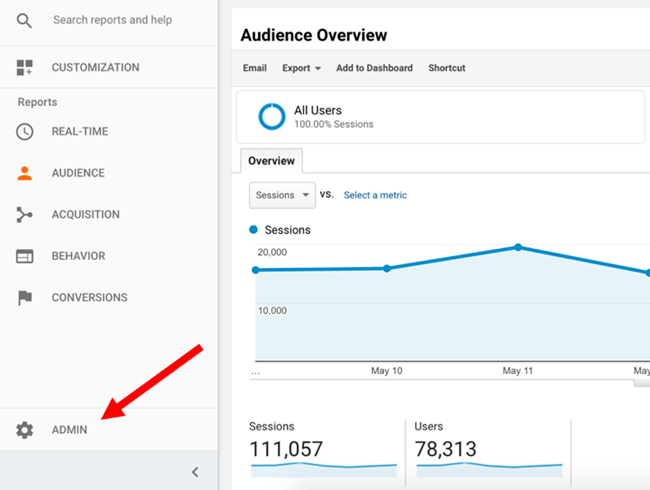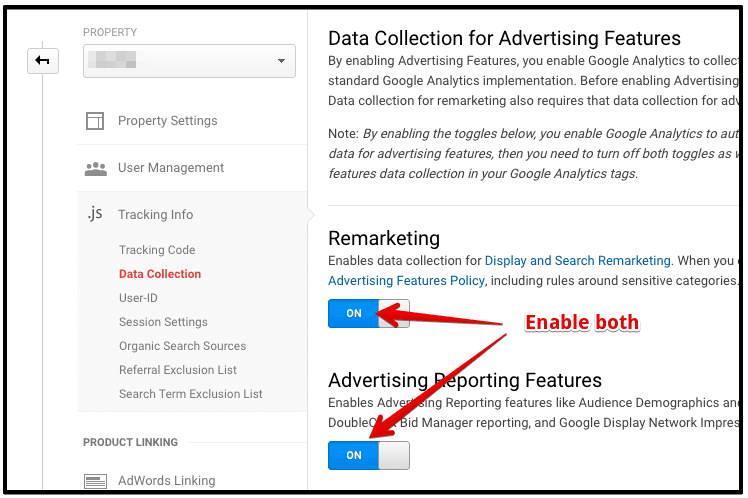Recognizing the Power of Remarketing In Google Analytics
Recognizing the Power of Remarketing In Google Analytics
Blog Article
Using Remarketing in Google Analytics: A Comprehensive Guide
Utilizing remarketing in Google Analytics offers businesses a strategic edge in getting to out to prospective consumers. The capacity to target individuals who have actually already communicated with your internet site presents a distinct possibility for customized marketing efforts. By comprehending just how to craft target market lists and deploy them successfully, organizations can considerably boost their conversion prices. However, the complexities of setting up and enhancing remarketing projects need a thorough understanding of target market segmentation and performance analysis. This overview will certainly drop light on the crucial actions associated with utilizing the full potential of remarketing in Google Analytics, resulting in enhanced advertising outcomes.
Recognizing Remarketing in Google Analytics
Remarketing in Google Analytics enables companies to strategically target users that have actually formerly connected with their web site or mobile app. By leveraging data from Google Analytics, businesses can develop tailored remarketing listings based on user actions, such as pages checked out, activities taken, or particular objectives accomplished. This effective device enables companies to re-engage with customers that have actually shown passion in their services or products, eventually boosting the possibility of conversion.
Comprehending the various kinds of remarketing techniques is crucial for a successful campaign - What Is “Remarketing” In Google Analytics?. Google Analytics provides different alternatives, consisting of basic remarketing, vibrant remarketing, and remarketing listings for search advertisements (RLSA) Each kind offers a distinct function and can be tailored to satisfy certain marketing objectives
Moreover, examining the performance of remarketing campaigns is necessary for optimizing results. Google Analytics offers useful understandings right into the effectiveness of different remarketing methods, enabling organizations to make data-driven choices and improve their targeting approach. By continuously changing and keeping an eye on remarketing initiatives based upon analytics information, services can take full advantage of ROI and drive success in their advertising efforts.
Establishing Up Remarketing Projects

After establishing up audience lists, the following action is to connect Google Analytics with Google Advertisements. By linking these two platforms, organizations can perfectly transfer target market checklists from Google Analytics to Google Advertisements for remarketing functions. This assimilation permits even more specific targeting and much better campaign efficiency.
When the accounts are linked, organizations can produce remarketing campaigns in Google Advertisements utilizing the audience details previously defined in Google Analytics. These projects can be personalized with details ad creatives, messaging, and bidding approaches to successfully re-engage with past site visitors and drive conversions. By following these actions, companies can utilize the power of remarketing to improve their advertising and marketing efforts and increase ROI.
Using Target Market Segmentation Approaches

Predefined sections in Google Analytics allow you to rapidly examine common audience categories fresh users, returning individuals, or customers who completed a details goal on your internet site. Customized sectors, on the various other hand, enable you to see post develop unique sections based on specific requirements that are essential to your organization goals. Dynamic remarketing lists immediately change visit this site based on individual behavior, revealing personalized ads to individuals that have engaged with your website particularly methods.
Analyzing Remarketing Efficiency Metrics
Upon reviewing the effectiveness of remarketing campaigns in Google Analytics, the analysis of crucial efficiency metrics gives beneficial insights into target market involvement and conversion prices. By diving right into metrics such as click-through prices (CTR), conversion prices, expense per procurement (CERTIFIED PUBLIC ACCOUNTANT), and return on ad spend (ROAS), marketers can assess the success of their remarketing initiatives. CTR indicates the percentage of individuals that clicked on the ad after watching it, mirroring the ad's significance and appeal. Conversion rates measure the percentage of customers that finished a desired activity, such as making an acquisition, after clicking the ad. CPA exposes the ordinary price incurred for every conversion, helping assess project earnings. ROAS, on the other hand, quantifies the revenue produced for each dollar invested in marketing. Analyzing these metrics makes it possible for marketers to optimize campaigns, fine-tune target market targeting, and designate budget plans successfully to boost general remarketing performance.
Maximizing Remarketing Strategies
When refining remarketing methods in Google Analytics, focusing on target market division is vital for attaining campaign success. By separating your audience into details segments based upon their behavior, demographics, or rate of interests, you can tailor your ads extra effectively to every team. This targeted approach boosts the chance of engaging individuals that have actually currently revealed interest in your services or items, bring about higher conversion rates.
An additional critical element of maximizing remarketing approaches is continuously screening and refining your campaigns (What Is “Remarketing” In Google Analytics?). A/B testing different ad creatives, messaging, or offers can aid you determine what reverberates finest with your audience and drives the most conversions. By analyzing the performance of these tests in Google Analytics, you can make data-driven choices to enhance your remarketing initiatives better
In addition, leveraging vibrant remarketing can dramatically boost your project results. This attribute enables you to show customized ads to users based on their previous communications with your site, showcasing solutions or items they have previously watched. By supplying customized content to users based upon their passions and habits, vibrant remarketing can help increase engagement and drive conversions.
Verdict
To conclude, taking advantage of remarketing in Google Analytics is a tactical approach to target customers that have formerly involved with a site. By developing personalized audience checklists and using audience division methods, companies can optimize remarketing advocate boosted conversion rates. Assessing efficiency metrics and continuously maximizing methods are essential for optimizing the efficiency of remarketing initiatives.
Google Analytics uses different alternatives, consisting of standard remarketing, vibrant remarketing, and remarketing lists for search advertisements (RLSA)After setting up target market lists, the following step is to connect Google Analytics with Google Ads. By connecting these two systems, organizations can perfectly move target market advice lists from Google Analytics to Google Ads for remarketing objectives.Once the accounts are linked, services can develop remarketing campaigns in Google Advertisements making use of the audience notes formerly specified in Google Analytics.When refining remarketing strategies in Google Analytics, focusing on target market division is paramount for accomplishing project success.
Report this page